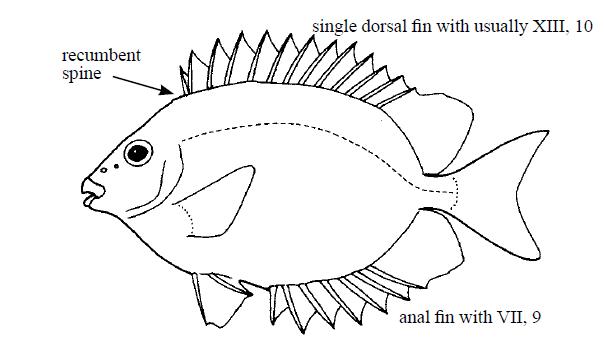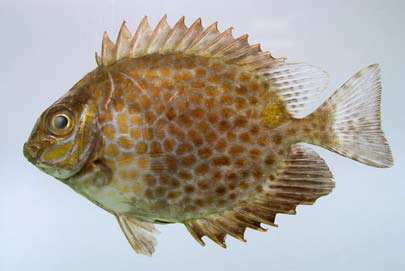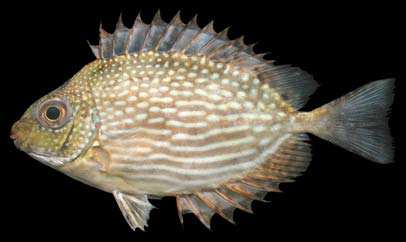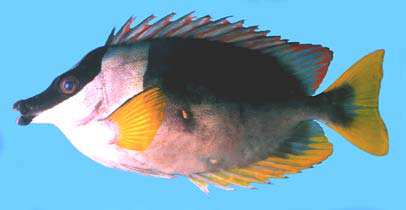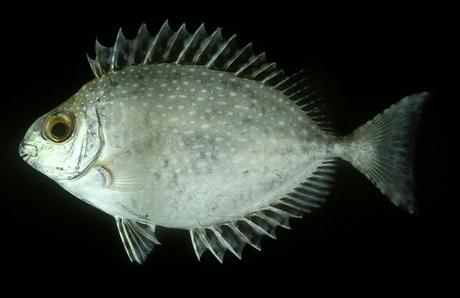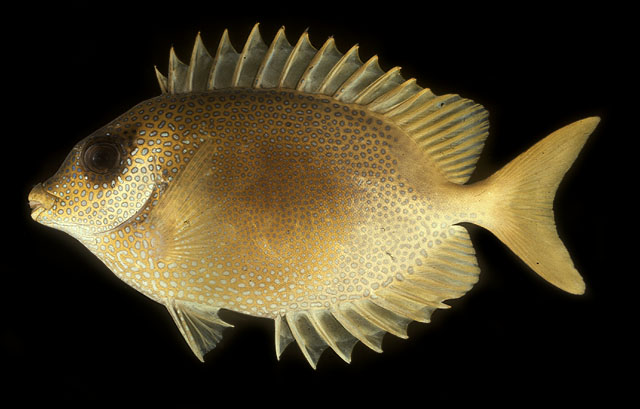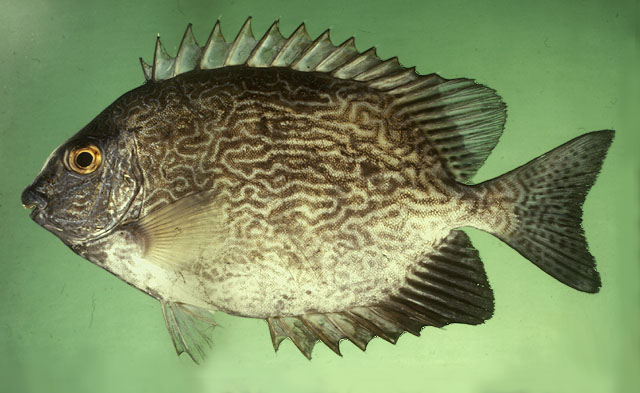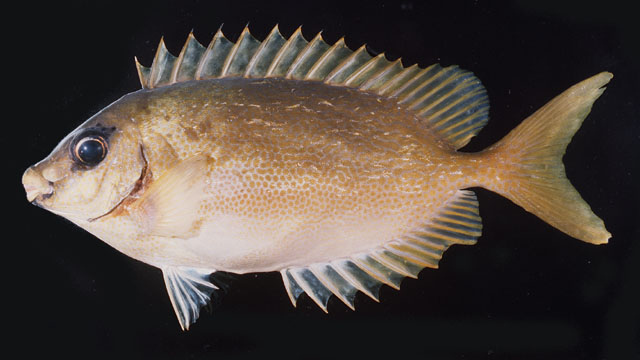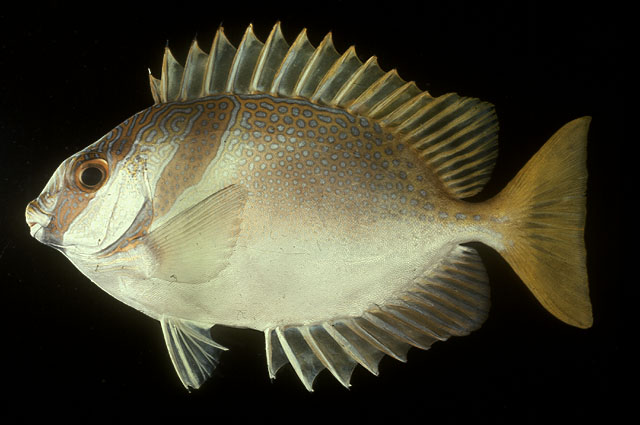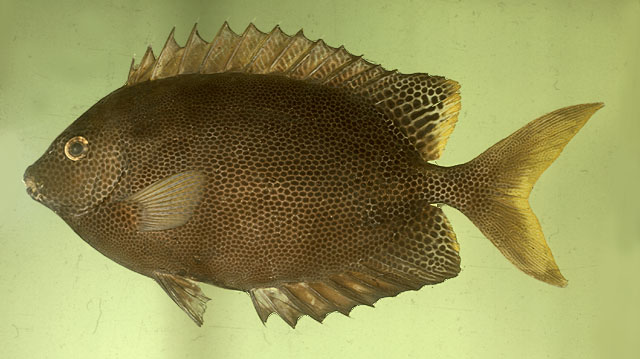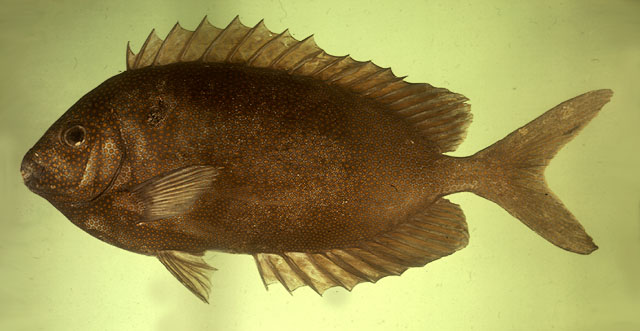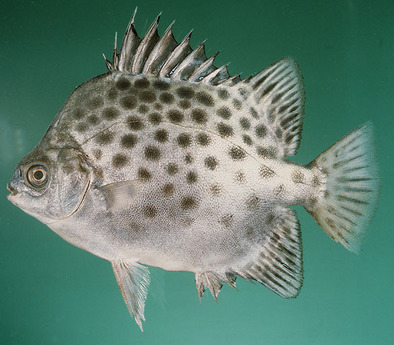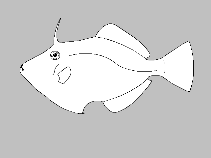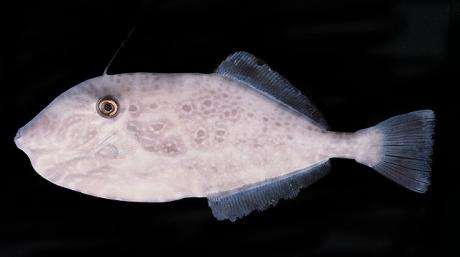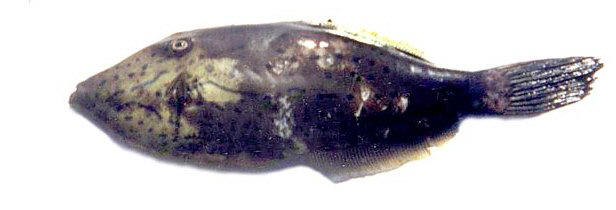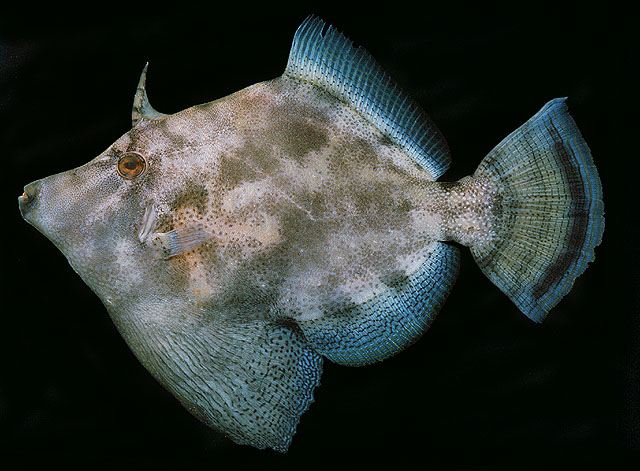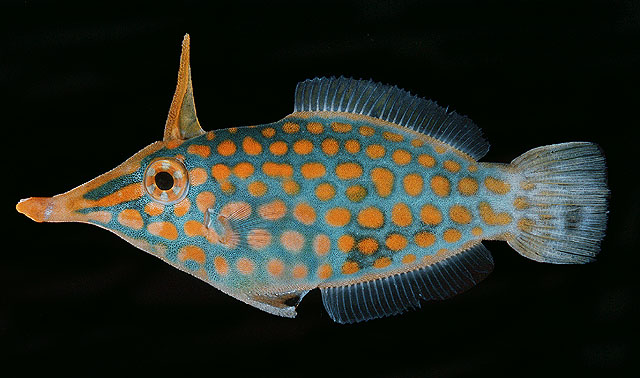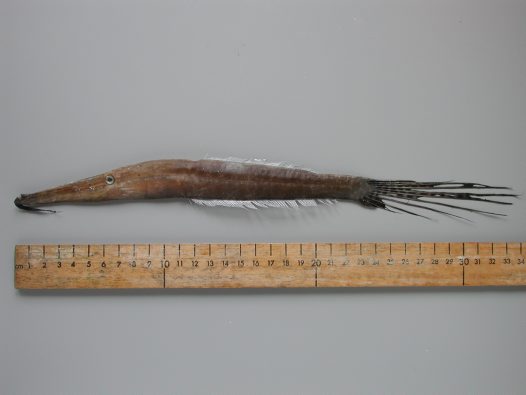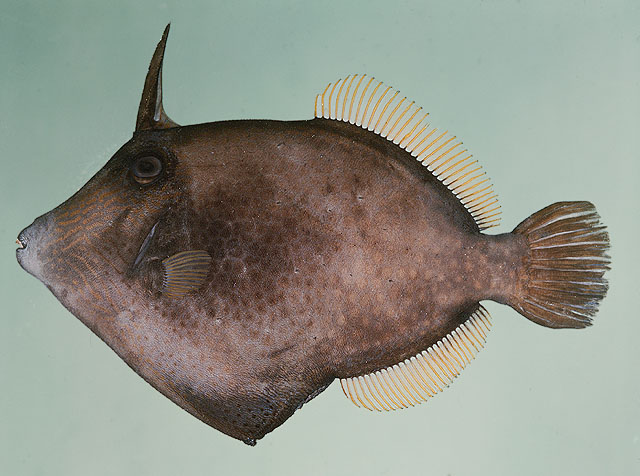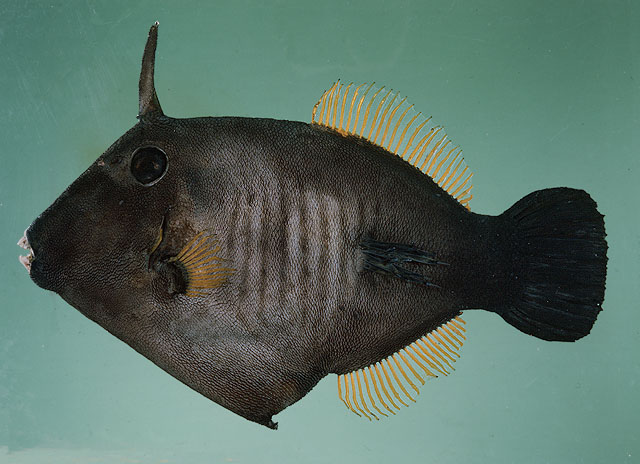Body oval, strongly compressed, reaching to 55 cm. Mouth small, terminal; jaws not protrusible; a single row of compressed, incisiform teeth on jaws. Dorsal fin with XIII spines and 10 soft rays, preceded by embedded, recumbent spine. Anal fin with VII spines and 9 soft rays. Pelvic fins with an inner and outer spines and separated 3 soft rays. Fin spines with a pair of grooves containing venom glands. Body covered with small, cycloid scales. Color: species inhabiting coral reefs having bright color with reticulations and markings, and other species with drab mottled pattern.
Similar families occurring in the area. Acanthuridae and Chaetodontidae: I spine and 5 soft rays in pelvic fins.
Indo-Pacific and eastern Mediterranean. Each pelvic fin with 3 soft rays between an inner and an outer spine. Dorsal fin with 13 strong spines; soft rays 10. Anal fin spines 7; soft rays 9. Poisonous spines. About 40 cm maximum length. Some species in schools; others among corals. All species are diurnal herbivores that feed on benthic algae. Pelagic spawners. Important foodfishes. Some of the colorful species are popular in the aquarium trade
Remarks. Dwelling on bottom in shallow coastal waters. Some species found in coral reefs and others in mangroves and seagrass beds. Primarily herbivorous. Caught by bottom trawlers, traps, set nets and by spear. Marketed fresh.









